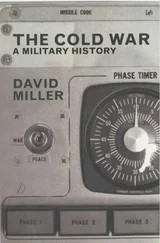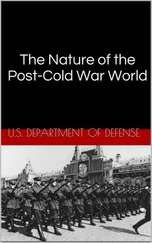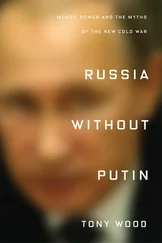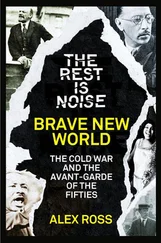Looking back at the crisis and events since, it is also clear that the GFC marked a major turning point in Sino-US relations. The illusion of American omnipotence was shattered, and China's own self confidence increased. This increased China's willingness to challenge the US where it felt its own interests were at stake and ushered in a more assertive attitude in the conduct of its international affairs.
The focus of this book is the escalation in tensions between the US and China. There is a severe risk that a misdiagnosis of key sources of tensions will lead to the wrong treatments being applied, allowing conflicts to spread and become more aggravated. It is therefore critical to carefully examine the history of the Sino-US relationship, including its financial dimensions, to correctly identify the key issues that must be addressed.
Modern History of Sino-US Relations
After the CCP came to power in 1949, a rift opened between the US and China along the ideological lines of capitalism versus communism. As the Cold War got under way, the US applied the same strategy of ‘containment’ towards China that it employed with the Soviet Union. For three decades, the US did not officially recognise the People's Republic of China (PRC) and sought to limit its influence in and recognition by the outside world. For its part, China treated the US as a strategic enemy and sought to spread communist revolution in Southeast Asia, threatening US interests. The countries stood on opposing sides in two wars: in Korea (1950–1953) and in Vietnam (1955–1975).
The impetus for the thaw in relations that started with Henry Kissinger's secret visit to China in 1971 was their common desire to counterbalance the threat from the Soviet Union. It was a relationship based not on common ideals, but on a common enemy. The eventual normalisation in relations that came in 1978 left open the important question of the future of Taiwan. However, vast US military superiority meant that there was little immediate prospect that differences over the territory would boil over. Moreover, Deng Xiaoping was preoccupied with economic reforms after the ravages of decades of civil strife.
As the threat from the Soviet Union declined during the 1980s, both because of Mikhail Gorbachev's rise to power in 1985 and due to the implosion of communism itself, the basis of the Sino-US relationship evolved into one of commerce and trade. Trade was mutually beneficial in many ways, and China's economic reforms transformed the lives of most of the Chinese people for the better. However, the two countries’ social and political models remained poles apart. In 1989, a wave of protests erupted in China, calling for faster political reforms. The violent suppression of these became a flashpoint in Sino-US relations, since the CCP's actions offended American sensibilities over human rights and democracy.
In retrospect, comparing China's trajectory to that of Russia in the years since, it is hard to argue that a different course of action at that time would have resulted in a better outcome for the Chinese population as a whole. Reforms of the size and scope that China was pursuing had created significant internal conflicts both within the CCP leadership and across wider society. Deng's historic Southern Tour (南巡) in 1992 signalled his continued commitment to economic reforms. This was critical in overcoming internal opposition within the CCP and broader society to continuing reforms. George H.W. Bush took the decision not to leave China ostracised and out in the cold and, with the skilled stewardship of Zhu Rongji (朱镕基) – first as vice premier, then as premier – huge leaps forward were made in China's economic transformation. These included the introduction of market-based pricing mechanisms, monetary reforms to rein in runaway inflation, and privatisation of some of the sprawling state-owned enterprises (SOEs). He also successfully negotiated China's entry into the WTO, spurring a surge in foreign investment and exports.
Throughout this period, China's record on human rights was a recurring theme in the dialogue between the two countries. In part, this reflected public opinion in the US and its commitment to liberal democratic values. In part, it also served as a useful pretext when the US needed leverage in negotiations on other matters. Taiwan's continuous transformation into an ever more vibrant liberal democracy presented problems for both sides.
US actions in other parts of the world in the post-Cold War period significantly coloured China's views about US foreign policy. A number of events heightened insecurity among China's leadership. During the 1991 Gulf War, the ease with which US-led forces overran Saddam Hussein's army – then the fourth largest in the world – shocked China's military leaders. 7 It highlighted the backwardness and vulnerability of the People's Liberation Army (PLA). Their insecurity was reinforced by Bill Clinton's decision to send two aircraft carriers to Taiwan during the Taiwan Strait crisis in 1996. 8 China had become a net importer of crude oil that year. With 80 percent of China's oil imports passing through the narrow waterway connecting the Indian Ocean and the South China Sea, known as the Malacca Strait, 9 American dominance of the sea lanes in close proximity to China posed a threat that key supplies would be cut off in the event of conflict. This focused the Chinese leadership's minds on maritime security.
The US-instigated North Atlantic Treaty Organisation (NATO) bombings of Yugoslav troops during the Kosovo War in 1999 also set a worrying precedent for China's leadership, who had strenuously opposed the action alongside Russia as interference in the internal affairs of another sovereign country. The pretext of humanitarian intervention, given continuous US attacks on China's human rights record, was a cause for serious concern to the CCP. The Bush Administration's pursuit of an invasion of Iraq in 2003 further compounded insecurities. The Chinese leadership saw little option other than to pursue comprehensive military modernisation as economic growth provided the financial means.
During the 1997 Asian Financial Crisis, in contrast to other countries in the region, China resisted devaluing the renminbi. It was hoped that currency stability would demonstrate China's financial discipline and help maintain confidence in its economy, but it also served to bolster regional economic stability. As its balance of payments surplus, particularly versus the US, surged after the turn of the millennium, China then drew heavy criticism from US policymakers for holding down the value of its currency. China's manufacturing growth contrasted with a decline in America's manufacturing capacity and it became easy to blame China for the loss of American jobs. However, on closer inspection of China's manufacturing exports, the picture becomes rather less clear cut.
A high proportion of China's exports is in the processing trade and contains high import content. One estimate shows that, of the 7.4 percent GDP growth that China saw in 2014, consumption and investment accounted for 3.8 percent and 3.0 percent, respectively, meaning that net exports only contributed 0.6 percent to China's GDP growth that year. 10 What is more, by 2018, although China's trade surplus with the US had reached $419 billion, its trade with the rest of the world was roughly balanced. That is to say that, while China has a huge balance of payments surplus versus the US, this is offset by a deficit that it is running with other nations and territories, including raw material exporters such as Australia and Brazil; and suppliers of intermediate goods and components, such as Korea and Taiwan. 11 The US balance of payments deficit versus China is therefore more accurately depicted as a deficit that the US is running against the rest the world.
Читать дальше












